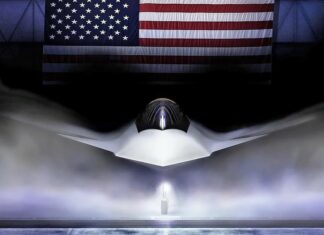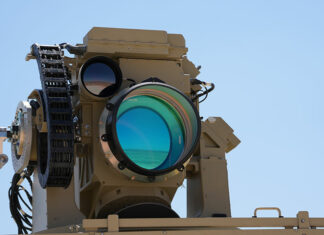This article is part of our weekly DefenseTech Brief.
A significant new defense initiative, dubbed “Golden Dome for America,” was launched on January 27 by President Donald Trump via an executive order, aiming to develop a comprehensive missile defense shield for the U.S. homeland. The initiative seeks protection against a range of aerial threats, including ballistic, hypersonic, and cruise missiles. The name, initially “Iron Dome for America,” evokes Israel’s successful short-range rocket defense system. However, the US concept involves a far more complex and multi-layered approach, heavily reliant on space-based assets.
The Pentagon is currently in the early stages of evaluating options, having received more than 360 responses to a request for information from industry. The proposed architecture centers on constellations of satellites in low-Earth orbit. This includes a “custody layer” for detecting and tracking missiles, and potentially a separate “attack layer” of space-based interceptors armed with kinetic kill vehicles, missiles, or lasers to neutralize threats, possibly during their boost phase. This revives concepts similar to the Reagan-era Strategic Defense Initiative (SDI), also known as “Star Wars”.
Elon Musk’s SpaceX, reportedly partnering with software firm Palantir and drone-builder Anduril, has emerged as a frontrunner for developing key parts of the Golden Dome, particularly the custody layer. This consortium has pitched a plan involving 400 to over 1,000 sensing satellites. SpaceX’s existing launch capabilities and potentially adaptable satellite technology are seen as advantages for meeting accelerated deployment timelines called for by the administration. Unusually, SpaceX has proposed structuring its involvement as a “subscription service,” where the government pays for access rather than owning the system outright. This approach can potentially speed up deployment but raises concerns about long-term control and costs.
Traditional defense contractors, such as Lockheed Martin, Northrop Grumman, Boeing, and RTX, are also expected to be major players. Lockheed Martin, for instance, is actively promoting its existing combat-proven systems (such as Aegis, THAAD, PAC-3, C2BMC, and SBIRS) and integration expertise as a foundation for the Golden Dome, advocating a “whole-of-industry” approach that combines established and newer players. Booz Allen Hamilton has also proposed its “Brilliant Swarms” concept involving thousands of small interceptor satellites. L3Harris Technologies has recently completed a $125 million expansion at its space manufacturing facility in Fort Wayne to support the urgent need for on-orbit technology for the Golden Dome. Boeing suggests using its X-37B space plan for deployment and servicing for new space assets. Two of these space planes are currently operational, but more can be built, company executives said.
The overall cost is estimated to reach hundreds of billions of dollars potentially. Initial capabilities, likely technology demonstrators of parts of the program, are targeted for delivery starting in early 2026. SpaceX’s preliminary estimate for the custody layer’s engineering and design alone is reportedly $6 billion to $10 billion. Significant technical and strategic challenges remain, including the feasibility and cost-effectiveness of space-based interceptors against potentially large numbers of offensive missiles, as well as concerns about destabilizing strategic deterrence.
The Space Force has established a planning team to map its contributions, focusing on existing and planned missile warning and tracking satellite constellations, such as Next-Gen OPIR, HBTSS, and SDA’s Proliferated Warfighter Space Architecture.




















